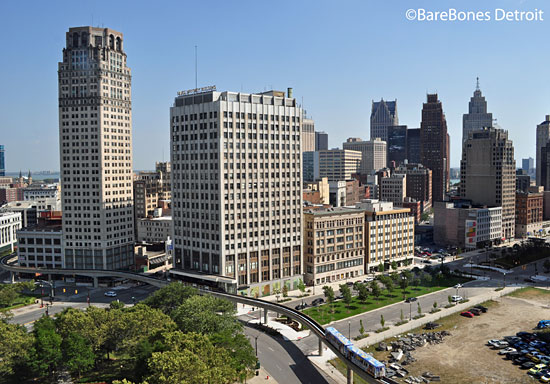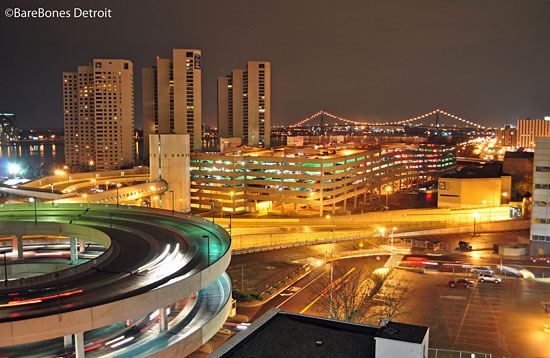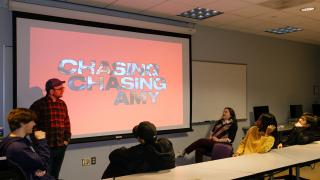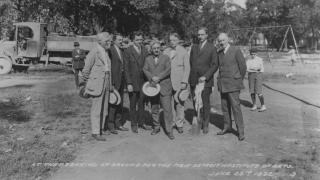
“Ruin porn”---images depicting urban decay in the city of Detroit---may be popular with many local and visiting photographers, but not Michael Holtzman, who runs BareBonesDetroit.com with Sabrina Fitzwilliams.
“My focus is on preservation,” said Holtzman, who began capturing images of the city as an amateur photographer with Preservation Wayne. “I would rather see a building restored than demolished.”
That’s why BareBonesDetroit.com doesn’t feature ruins, but rather, a photographic tour of more than 120 locations in Detroit, concentrating on each location’s historical significance. As the website states: By preserving the bones of the city, we’re ensuring a foundation to build on.
“Detroit is a great place,” he said. “People bash it. The older generation doesn’t understand, but it’s changing drastically. The city is experiencing a lot of growth right now.”
Holtzman is a shining example of a growing cadre of University of Michigan-Dearborn students who are deeply committed to Detroit and its revitalization, according to economics Prof. Bruce Pietrykowski, who serves as director of UM-Dearborn's Urban and Regional Studies Program and director of the newly-opened Center for Labor and Community Studies on the Dearborn campus.
Like Michael, some of these students end up majoring in urban and regional studies in no small part because they want to contribute to improving the quality of life in the city after they graduate, he said.
"The BareBonesDetroit.com website is a labor of love," said Pietrykowski. "Michael and Sabrina invested and continue to invest an enormous amount of time documenting the historic structures of the city. A particularly unique aspect of the project is its broad geographic scope. BareBonesDetroit.com uncovers architectural gems in neighborhoods far off the beaten path from the Downtown/Midtown corridor. Hopefully visitors to the website will come to understand that economic development and historic preservation should complement and not compete with one another. "
Holtzman, an urban and regional studies major, and Fitzwilliams, a history major at Eastern Michigan University, created the website in January 2010 after a blisteringly cold day of photographing sites around Belle Isle.
BareBonesDetroit.com uses photographs, historical data and Google Maps to randomly sort the city’s locations, giving readers a new experience each time they visit. The technology showcases Holtzman’s skills in geographical information systems; he’ll receive a certificate in GIS to compliment his bachelor’s degree when he graduates from UM-Dearborn next spring.
In addition, visitors may look for locations using the search box, or find destinations directly on the map.
The website will be complete when all of the more than 600 buildings in Detroit protected by either a national or state designation are chronicled, according to Holtzman.
He and Fitzwilliams are open to community partnerships as well as collaborating with local universities or other educational institutions that may be interested in utilizing their images as an educational resource. Those interested may contact them through BareBonesDetroit.com.
Holtzman hopes the website will encourage people to take a second look at the city. “Detroit has a lot of momentum building right now,” he said. “I think in five years, it’ll be a lot different than it is right now.”
Images courtesy Michael Holtzman.







